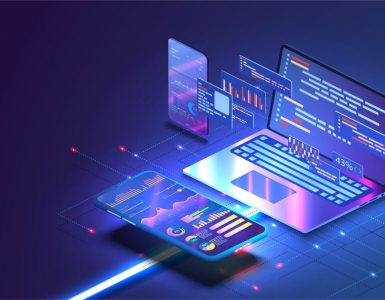Backend development is often not appreciated as much as the front end for apparent reasons. When the technology empowering those immersive UI/UX designs is hiding from the end-user, it is easy to lose sight of its importance. But the industry understands the complexity involved in writing backend code. There is a lot to handle, from APIs and server optimization to caching and cookies. Amidst all these coding responsibilities, it is easy for backend developers to commit mistakes.
This article lists some good coding practices that backend developers can use to write code efficiently without worrying about bugs or errors.
1. Validate inputs
Once your application is live, a lot will happen. Hackers may penetrate the system, or users can trigger an unintended use case. To avoid these issues, you must implement rules to validate inputs. This will ensure that only valid inputs are going to the downstream systems.
There are two best coding practices to validate the inputs. First, API gateways can be used for validation. The validation of inputs at the API gateway level is a more generic type that uses policies like schema and format to validate the information. Second, microservice level validation can be implemented to check the entries. There are many open-source libraries available that you can import into your project for microservice-level validations. Joi validator is one package you can use to ease input validation.
2. Handle errors carefully
No error must be left unattended as it further complicates debugging. After validating the inputs, the discovered errors must be appropriately handled. The microservices/mesh architecture errors must be handled correctly because many services are interconnected here. If one service crashed due to a mistake, it could send ripple effects across, affecting the whole system. It will be a whole lot of trouble to handle errors at a system level.
Many backend developers use a combination of methods to handle errors that can cause a system-level impact. For instance, Circuit Breaker is one way to prevent repeated invocation of services that are most likely to fail and cause a ripple effect. Here is an example of how you can implement Circuit Breaker in NodeJS and Spring Cloud. Another way is to use error codes to handle exceptions. This approach will ensure that the code returns a response code without crashing the service. Most enterprise-level services handle API errors with HTTP codes to facilitate troubleshooting.
3. Separation of concerns
Separation of concerns is one of the essential elements of software architecture. Enterprises use this approach to correctly separate the security concerns and improve the maintainability of the code. Backend developers can make their code modular with this approach. It is a coding practice that will make your code readable to other developers making it easier for other developers to collaborate with you, as they do not have to spend unnecessary time getting up to speed.
There are several ways to structure your code; for instance, the MVC framework is primarily implemented to separate the software’s model, view, and controller layers. The idea is to establish a standard practice for the team to follow to separate concerns. Here are some excellent references on the separation of concerns. You can choose the one that best fits your application.
Separation of concerns is a practice that significantly reduces barriers to entry when it comes to coding and makes it easier to read and learn from. This directly translates into the overall speed and efficiency of product development.
4. Write test cases and documentation
Backend development is complicated, and writing test cases before development helps visualize the end product. This is important because it minimizes subsequent changes that can prolong product development. When you write test cases, you are putting up barriers that detect any downstream impact of the changes you made to the code base before things spiral out of control.
Test-driven backend development is one of the best practices that advocates writing test cases before you start the development. It might take more time, but it’s a recommended approach for critical services because the bottom-top of software development is more efficient than the top-down approach.
Another best practice for backend developers is to document everything they write. When working on a product, it can be enticing to keep writing code for productivity and deploying the project faster without any documentation. However, as the product code grows, in the absence of documentation, developers will have to reach out to each other more frequently to clarify codes. This will eventually slow down the project development and hinder productivity. Backend developers are often tasked with the API documentation. Fortunately, you can use the Postman documentation tool to document your API development.
Conclusion
The best practices for coding that are listed here might not appear to be effective if you are working on the project single-handedly. However, as more developers join your team, you will understand the importance of these practices rather than implementing these approaches later on in the software development life-cycle.
Talent500 is the best remote team-building platform for Fortune 500 companies and fast-growing startups. Join our platform today.






Add comment